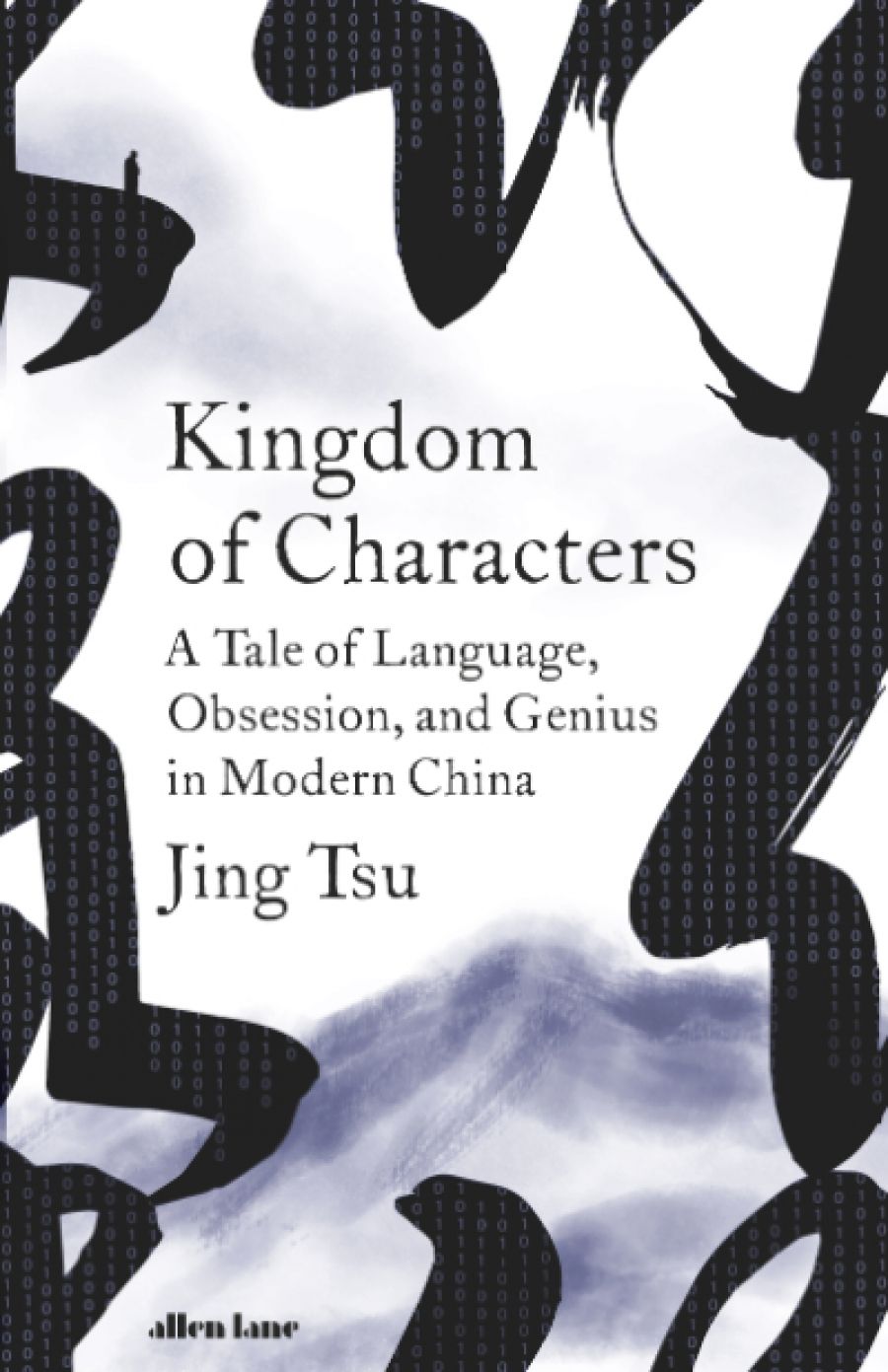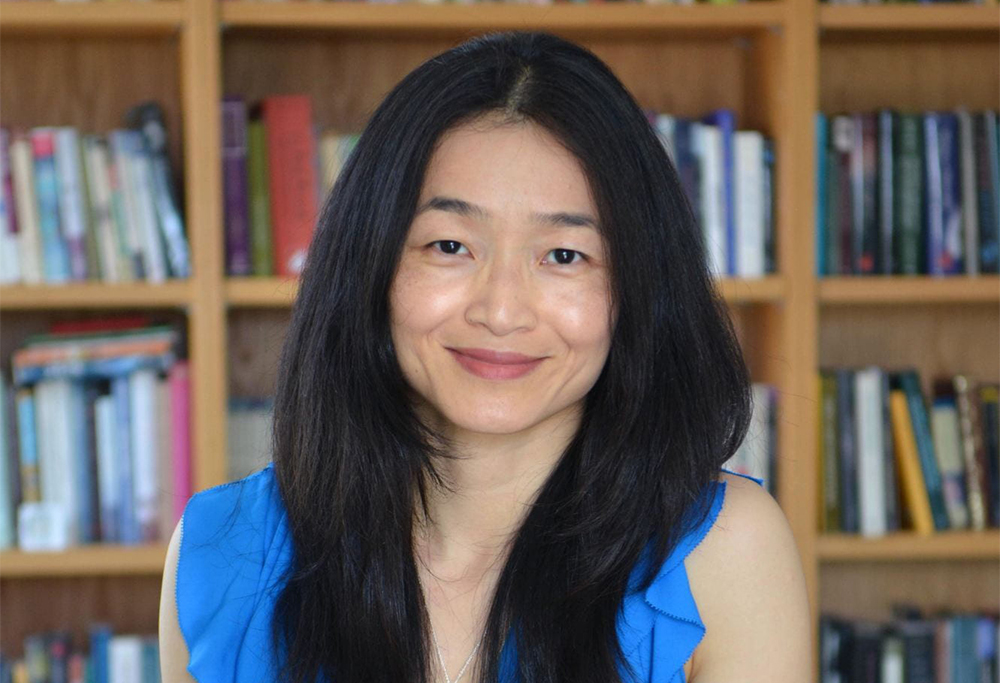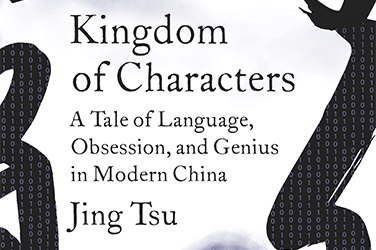
- Free Article: No
- Contents Category: China
- Review Article: Yes
- Article Title: Back to the future
- Article Subtitle: China’s quest to break down its language barrier
- Online Only: No
- Custom Highlight Text:
Picture, poem, or puzzle? The Chinese written character has been one of the most enduring obstacles to and catalysts for intercultural appreciation. When, in the early decades of the nineteenth century, the German philosopher G.W.F. Hegel wanted to demonstrate the relative backwardness of Oriental thought, he could find no better exhibit than the form of its writing. Attached as it was to ‘the sensuous image’, the putatively pictographic Chinese character forfeited access to the conceptual abstraction that afforded European thinkers their passports to the ‘free, ideal realm of Spirit’.
- Article Hero Image (920px wide):

- Article Hero Image Caption: Jing Tsu, Professor of East Asian Languages and Literatures at Yale University (photograph via Yale)
- Alt Tag (Article Hero Image): Jing Tsu, Professor of East Asian Languages and Literatures at Yale University (photograph via Yale)
- Featured Image (400px * 250px):

- Alt Tag (Featured Image): James Jiang reviews 'Kingdom of Characters: A tale of language, obsession, and genius in modern China' by Jing Tsu
- Book 1 Title: Kingdom of Characters
- Book 1 Subtitle: A tale of language, obsession, and genius in modern China
- Book 1 Biblio: Allen Lane, $45 hb, 336 pp
But as Jing Tsu shows in Kingdom of Characters, the problems and misunderstandings occasioned by Chinese writing plagued more than Western cognoscenti. As reformers during the death throes of the Qing dynasty (1644–1912) saw, assertions of political sovereignty rested on the capacity to exercise effective ‘linguistic governance’ (a term I borrow from Tsu’s 2010 study, Sound and Script in Chinese Diaspora, where one can see the first germs of her new book). This applied not only internally where linguistic standardisation was integral to nation-building (so far, so Benedict Anderson), but also on the world stage, where China’s ability to assert itself – diplomatically, technologically – was largely predicated on its characters’ finding equal footing on the alphabetic terrain of increasingly globalised communication networks. But how to do this when the semantic bedrock of a script in uninterrupted use for close to two millennia barely registers beneath a horizon of shifting topolects and accents, let alone a giant dust cloud of illiteracy?
Beginning with the heroic efforts of the exiled Qing official Wang Zhao to establish a transcription system, Tsu charts the birth pangs of modern China through various attempts to phoneticise, alphabetise, mechanise, simplify, and encode its cast of tens of thousands of characters. Written in a vivid and accessible manner, Kingdom of Characters serves as a useful primer on not only the Chinese language and modern Chinese history, but also the history of print and information technology. The reader is given insight into the diplomatic wrangling over international telegraphy pricing, the development of the typewriter keyboard and phototypesetting, and the birth of Unicode, an international standard for coding the world’s writing systems. While there is no shortage of fascinating detail, the book’s celebration of technical ingenuity and scientific progress occasionally verges on the mawkish (‘he was raised on the cusp of two worlds – the traditional one, where he was the good Confucian son, and the modern one, where he needed to be the daring scientist and engineer’), almost as if Kingdom of Characters were in part a Chinese update of Samuel Smiles’s series of biographical pep talks in Lives of the Engineers (1861).
Yet this meliorist mood is dampened by a structural intimation of plus ça change. We are made to see more than a passing resemblance between the pivotal scene in the first chapter, when Wang forcibly brings the Commission on the Unification of Pronunciation to install the Beijing-based vernacular as the national standard after much bickering between the northern and southern delegates, and the overheated discussions of the Ideographic Research Group in the final chapter, with delegates from Taiwan and Hong Kong disputing the accession of characters to Unicode as either new or variant glyphs. While the wheel of reform has not stopped turning for China since the 1912 Xinhua revolution that brought an end to its dynastic history, there can be the occasional stroboscopic illusion of reverse rotation. At such moments, we are, as it were, back to the future.
In some sense, the story Kingdom of Characters has to tell is less about the Chinese language than it is about the entrenchment of mechanisms of technical and bureaucratic control that is a harbinger of modernity. But against Max Weber’s pessimism about the world’s progressive disenchantment, Tsu posits the triumph of a collective will. As she puts it rather rousingly in the final chapter, ‘The Chinese script revolution has always been the true people’s revolution – not “the people” as determined by Communist ideology but the wider multitude that powered it with innovators and foot soldiers.’ The credit for modernising China is thus wrested out of the hands of the Communist Party and given to those closer to the ground. But what is offered as a neat post-ideological reinterpretation of ‘the people’s revolution’ can smell awfully like another kind of ideology.
In the main, Kingdom of Characters does little to disturb the notion that modernisation is tantamount to industrial and economic development on a Western schedule. To be sure, Tsu’s roster of Chinese ‘innovators’ had much to learn from their counterparts in America, Europe, and Japan, and Tsu lets her case studies do much of the talking. But the line between paraphrase and endorsement isn’t always so clear. Surprisingly, there is little in the explicit framing of this narrative-rich, conceptually thin book that might make the reader think twice about the unilinear (not to mention Eurocentric) path to modernity underwriting notions of China’s ‘backwardness’ or ‘belatedness’. Not only has such a historical metanarrative been challenged by recent sociologists and postcolonial thinkers, but it also isn’t entirely consistent with the thrust of Tsu’s own histories.
As the Russian critic Yuri Tynianov once suggested, the true innovator can be difficult to tell from the archaist. In many of Tsu’s accounts of forward-thinking, innovation and conservation are two sides of the same endeavour. Despite the recommendation of one of its creators, Unicode has become a repository for ‘preserving past antiquities’, cataloguing terms gleaned from esoteric source texts such as ninja manuals. The digitisation of written characters would not have been possible without the card-catalogue systems used by Chinese librarians. One of the key precedents for Chinese romanisation (pinyin) was the system developed to preserve Dunganese (a Sinitic language now largely spoken in Kazakhstan and Kyrgyzstan). In each case, the spur to invention was harnessed to a bid to consolidate, not overthrow, the past. Modernity, wherever and however we happen to look for it, seldom faces forward without looking longingly over its shoulder.
Some far-reaching conclusions, however, lurk at the edges of Kingdom of Characters’ comforting vignettes of a nation lifting itself up by the bootstraps of its inventors, engineers, and linguists. One such conclusion is that far less separates natural from artificial languages than one might imagine. Each time a mother tongue is subjected to a new notation regime, it is essentially de-naturalised, requiring its native speakers to patch up their linguistic programming. Indeed, a few of the reformist schemes mentioned by Tsu brush up against Esperanto and BASIC English. Such latter-day utopian linguistic projects recall seventeenth-century European attempts to establish a ‘character real’ – a universal formal medium for learned exchange that used the Chinese character as a reference point. The dream was to subsume linguistics under informatics. For China in the twentieth century, the technological streamlining of its script was much less a philosophical fantasy than a necessary safeguard for its future – and its past.


Comments powered by CComment